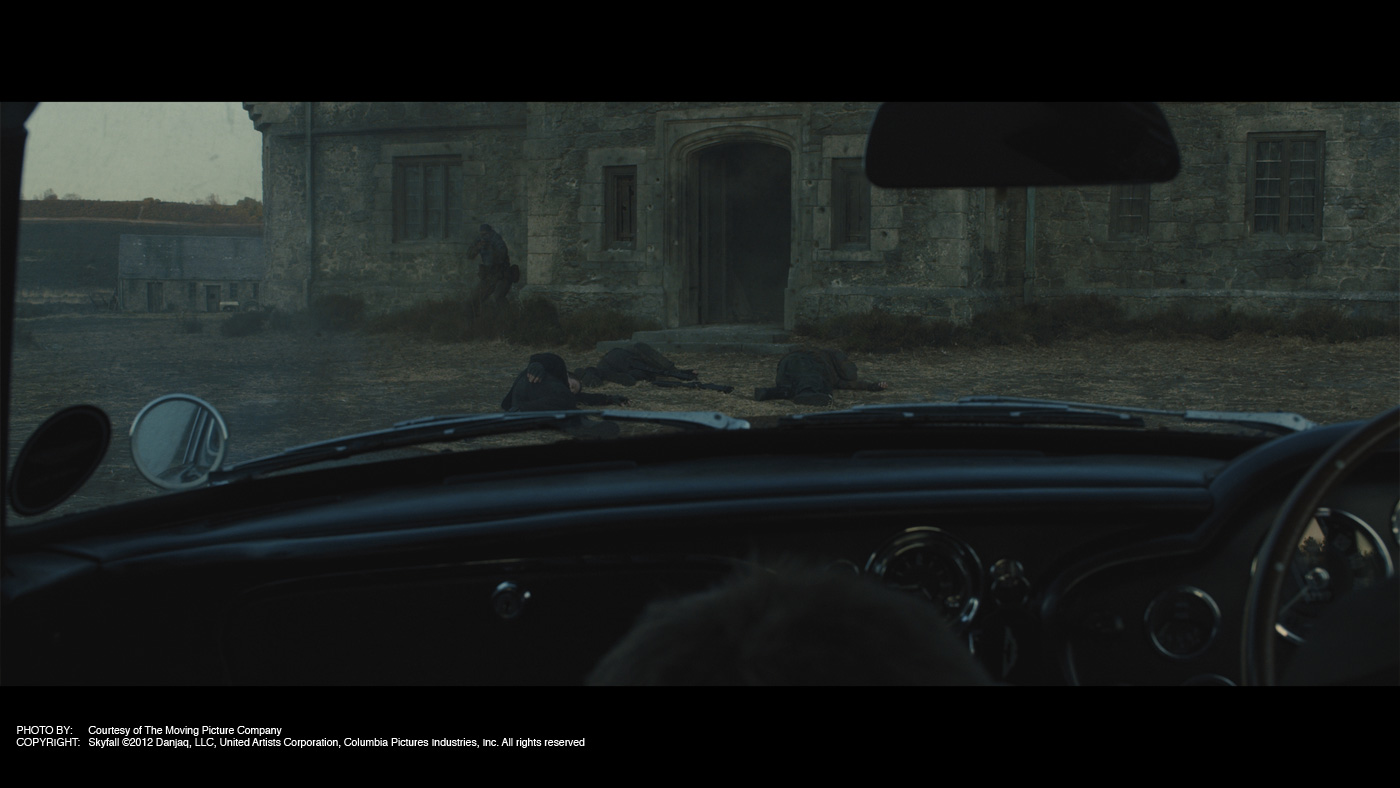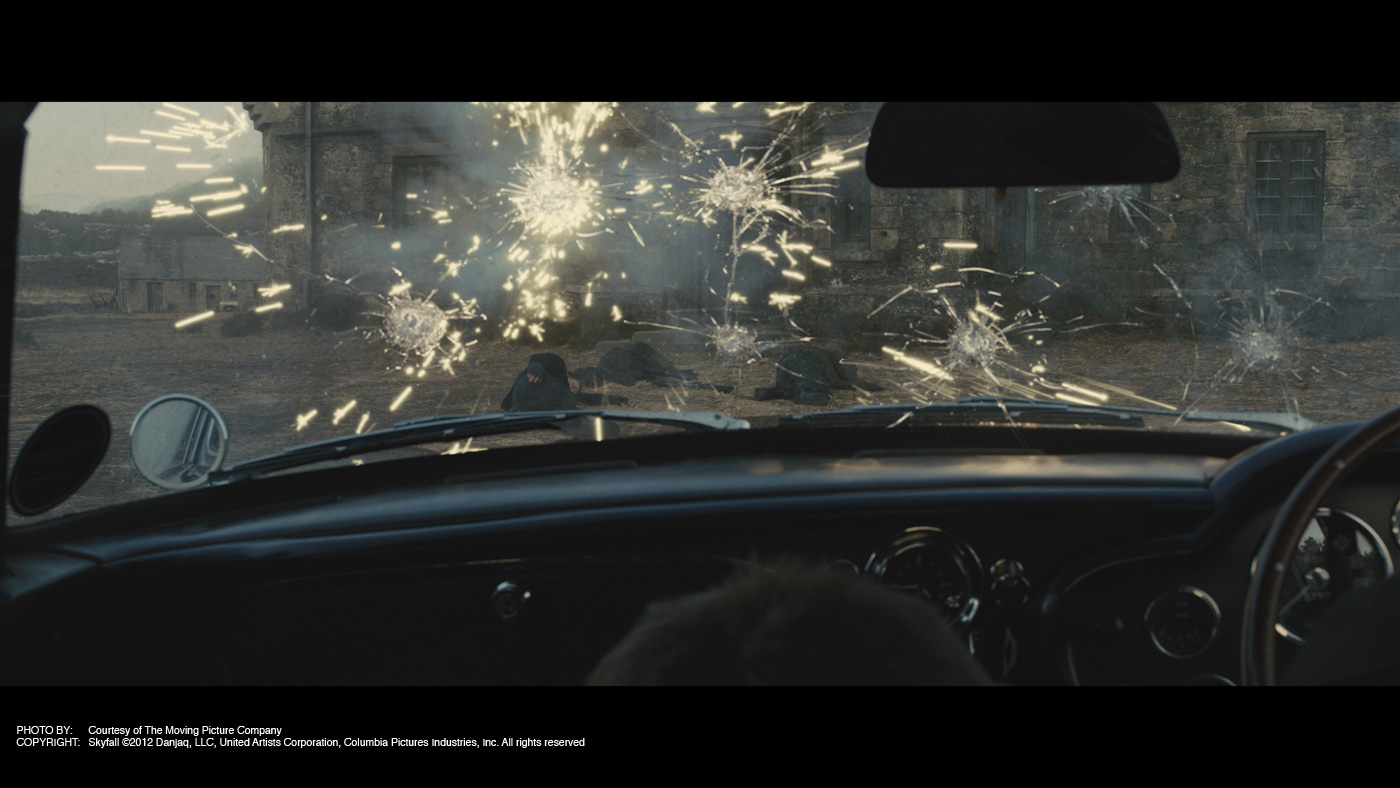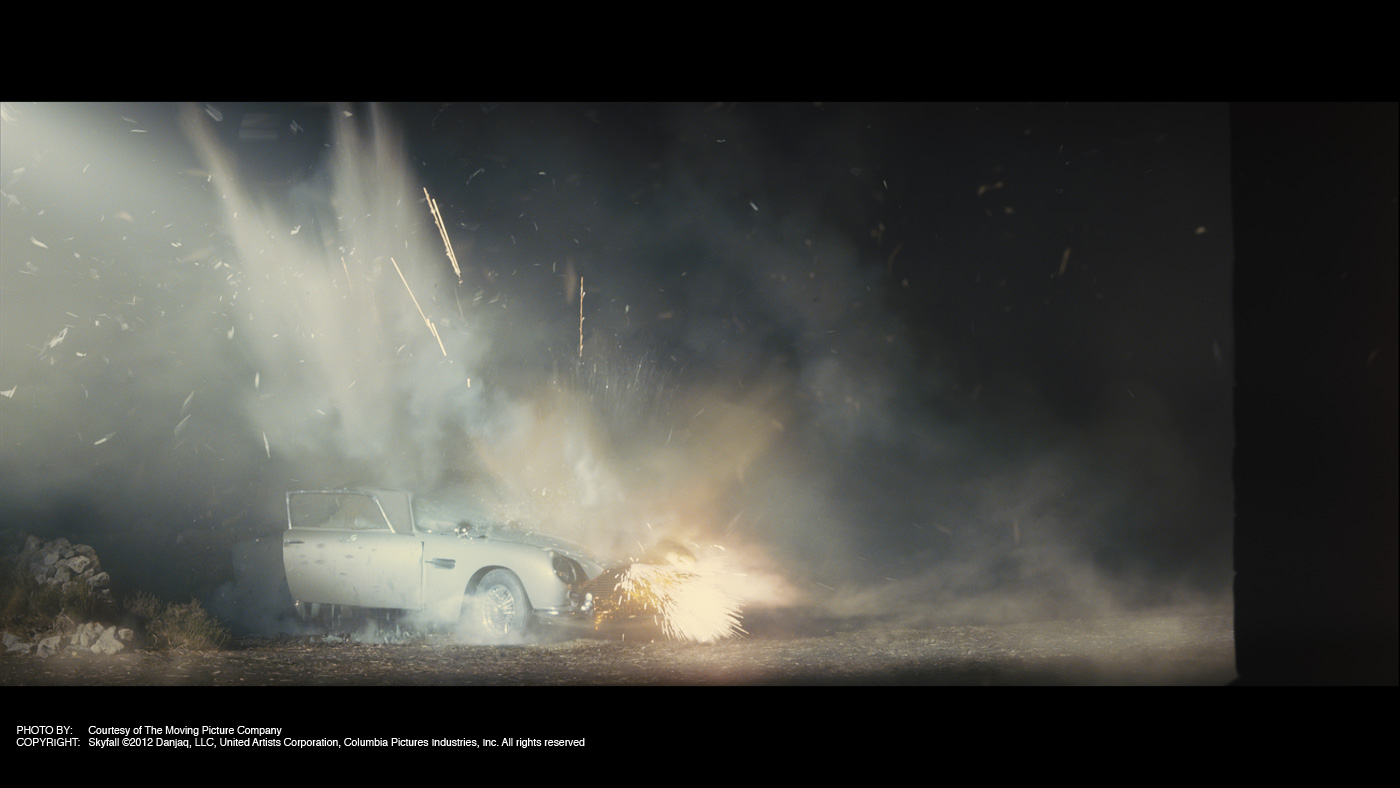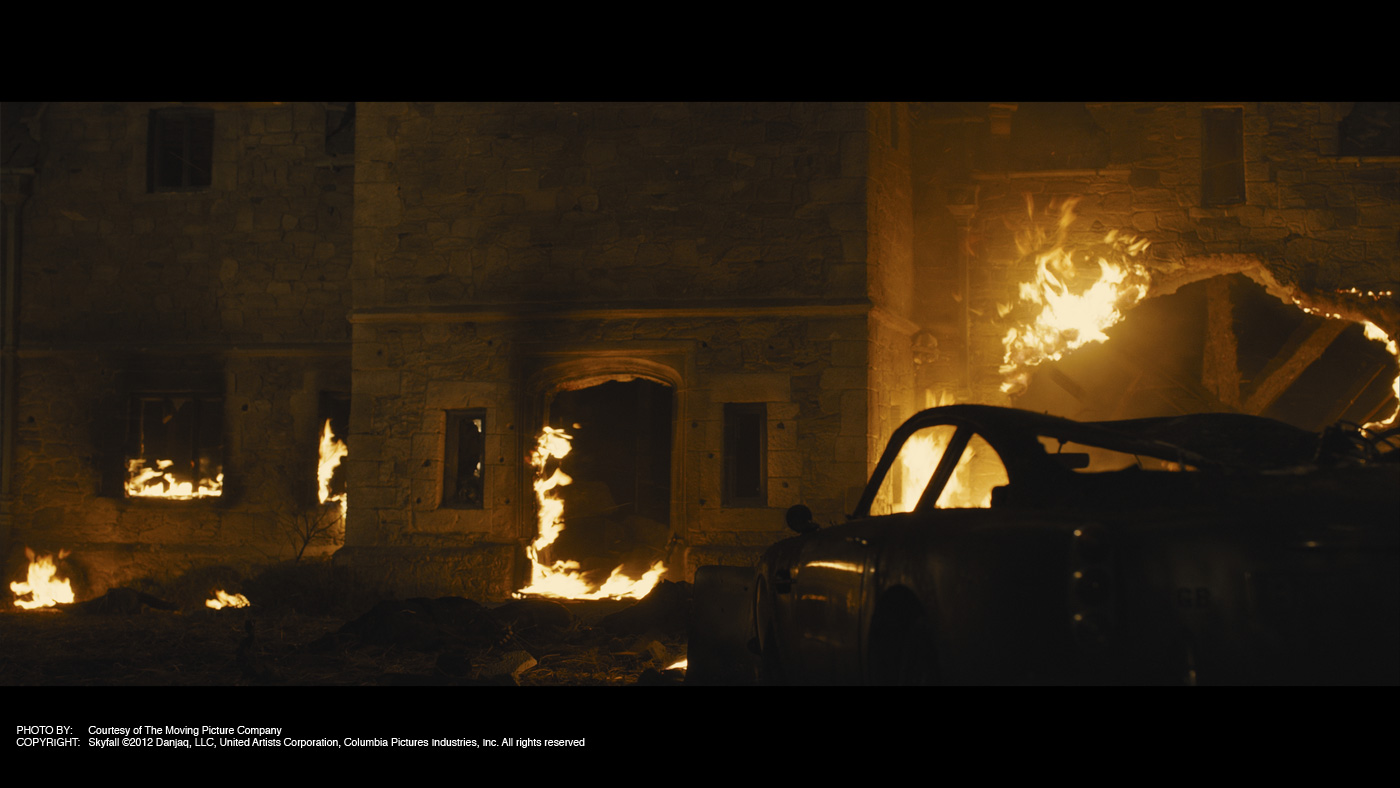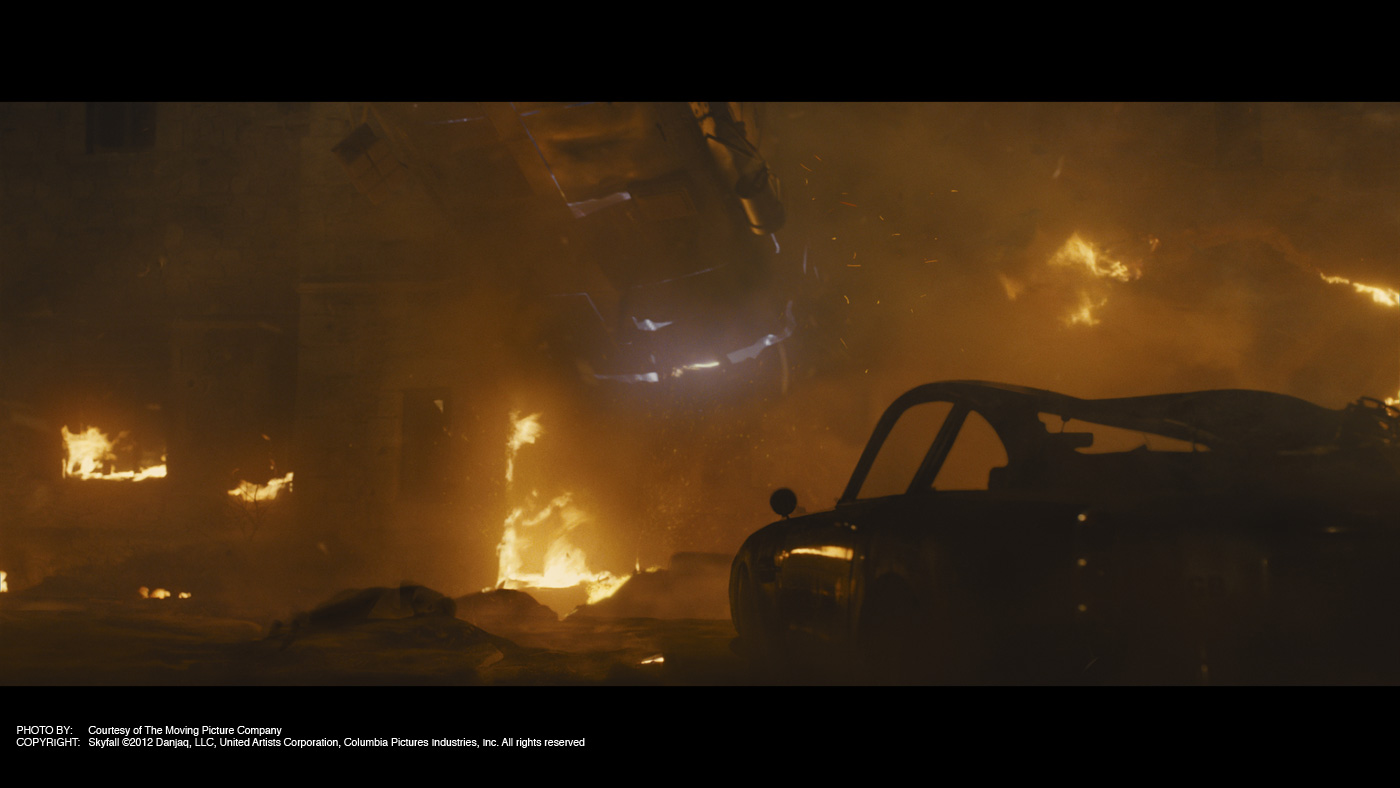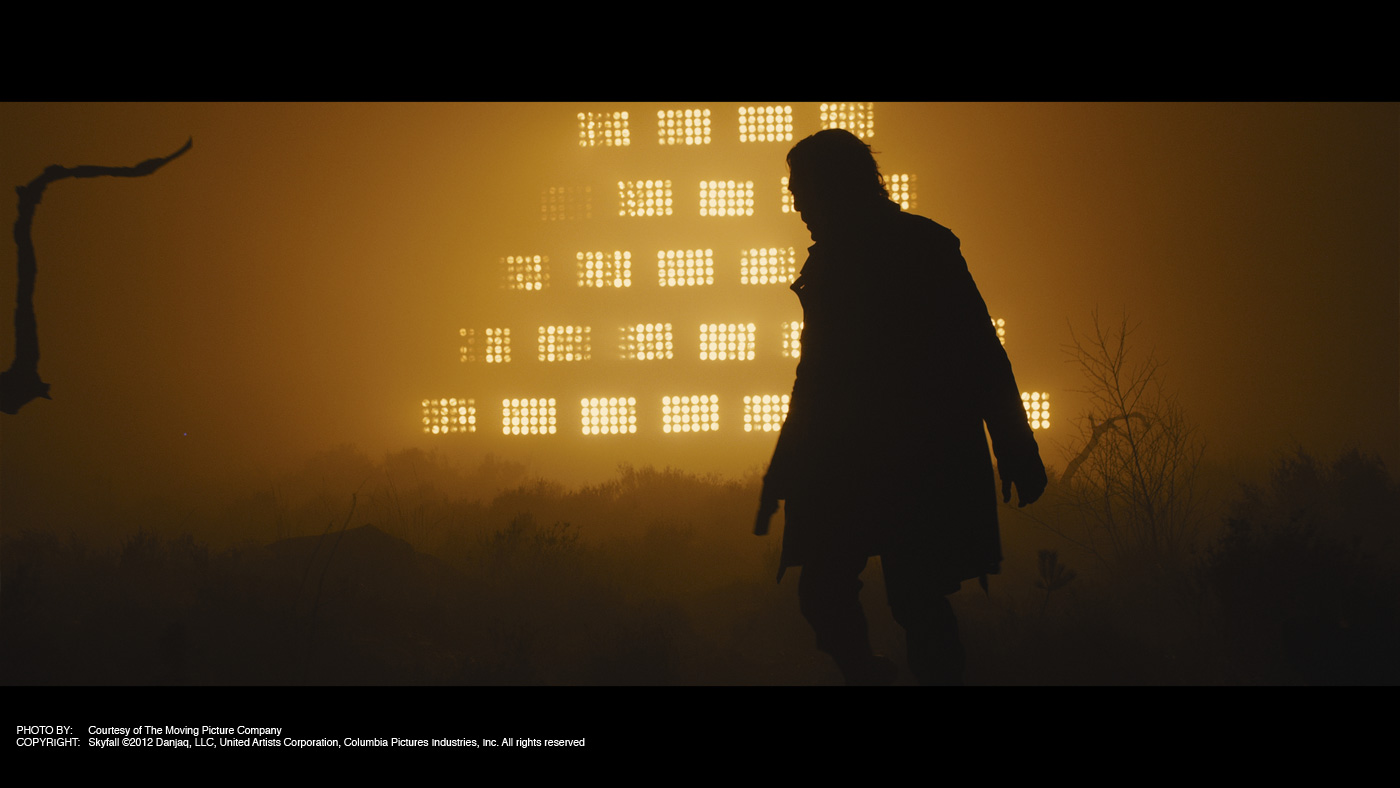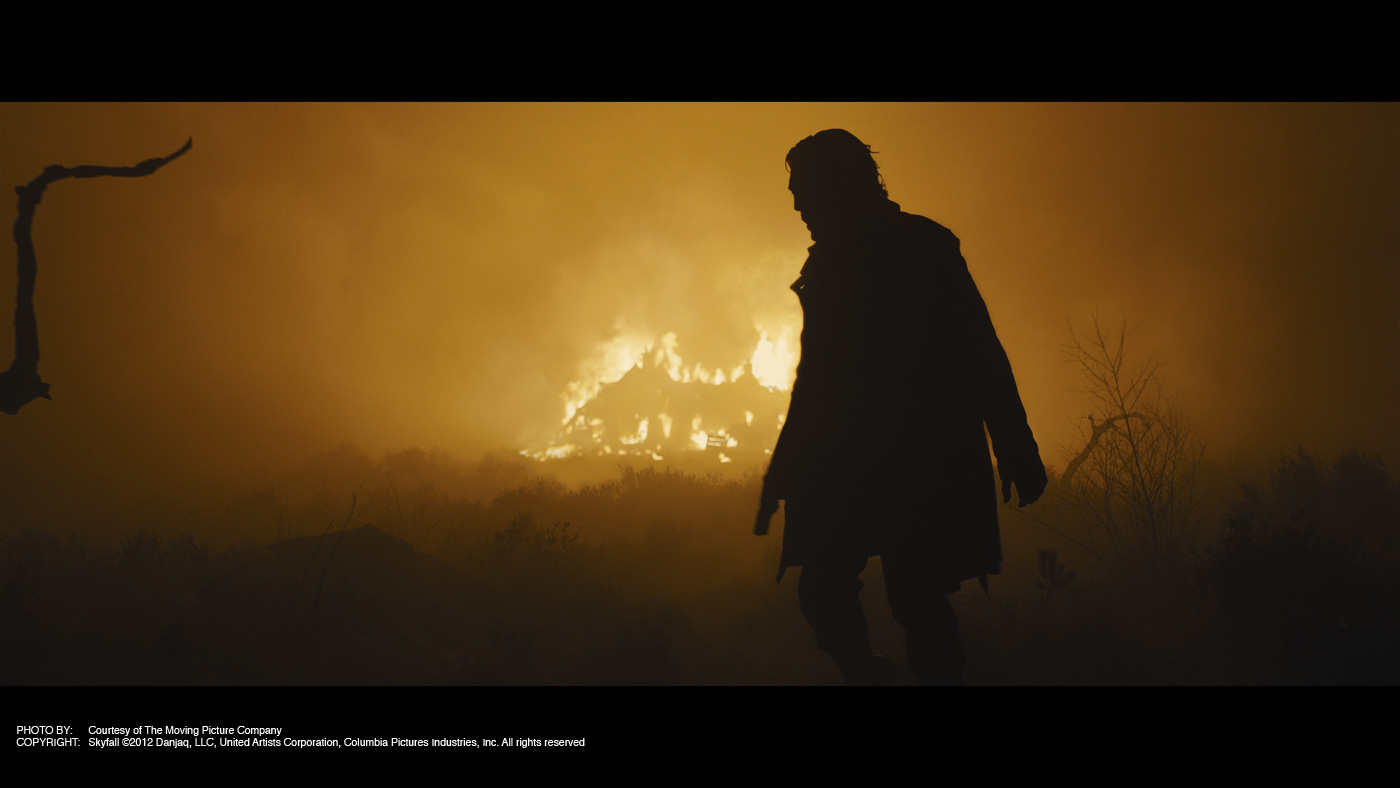Arundi Asregadoo is back on The Art of VFX. After he had talked about the effects on DARK SHADOWS, he explains the work of MPC on the final sequence of SKYFALL.
How did MPC got involved on this show?
Overall VFX Supervisor Steve Begg is a long standing friend of MPC. Steve and Leslie Lerman (VFX Producer) approached us in the pre-production stages of SKYFALL.
How was the collaboration with director Sam Mendes and Production VFX Supervisor Steve Begg?
Working. It was an amazing experience working with Sam Mendes and Steve Begg. From the first meeting we had with Sam, it was very clear what we wanted from the sequence. They gave us a great deal of creative freedom in developing the sequences. It was great to a see the amount of attention that was give to the image by Roger Deakins (Director of Photography), Stuart Baird (editor) and Sam.
It was great to work with Steve on this movie, especially with his experience with shooting miniature sets.
What have you done on this show?
MPC was awarded the final part of SKYFALL, where Bond takes M to Skyfall (his ancestral home). Within these sequences we have several different areas to deal with, the main bulk of the challenge was the environment. Other areas of work were the destruction of the DB5, the crashing and of the villain’s helicopter into the lodge, the chase across the moor and ice lake fight sequence.
Can you explain to us in detail the creation of the huge environment around the Skyfall manor?
At the pre-production stage, we discussed the approach in creating the environment for Skyfall with Steve Begg. We needed to have the ability to be flexible with the layout of the environment for Sam Mendes to create an overall look/design for the shots. The aim was to turn Guildford’s Hankley Common into the upper highlands of Scotland.
We had over 200 shots within the end sequence which required some form of environment enhancement to full CG environment. Isabella Rousselle (Lead DMP artist) and Jerome Martinez (Lead ENV artist) set about creating 360 degree Cyclos with low res geo, using Maya and Nuke.
We started by gathering photographic reference images. MPC’s Photographer, James Kelly went on location to capture a number of panoramas of the upper highlands of Scotland. These were then combined with reference photos taken of Hankley Common. The build had to be quite flexible to show the change in the time of day.
The other aspect to the environment was the home of Bond, Skyfall Lodge. The Lodge was a partial build. On location, the art department had built the outer walls and part of the roof. We had to build a CG roof extension, and add layers of weathering to the overall look of the Lodge. Behind the lodge is the frozen lake. We took a 2.5 approach in creating the lake, we had to be flexible, to give Sam the options of altering it.
Once we had established the layout of Skyfall with Sam, Compositing Supervisor, Matt Packham and Lead compositor Martin Riedel and his team set about blending the DMP images with the plate, by adding layers of mist and hanging clouds to create a cold and atmospheric shots.
What was the real size of the sets for this sequence?
The SkyFall location was a National Trust Park called Hankley Common, near Guildford. The set was approx. area 1.6 km2. The only constructions that were on the location was a partial build of the Skyfall Lodge and the Chapel in the distance.
At a moment, the iconic Aston Martin is destroyed. How did you enhanced this destruction?
This was an interesting challenge – destroying the iconic DB5!
There were several stages to the destruction of the DB5. In the first wave of attack, the DB5 is damaged by hail of machine gun fire. We looked into how bullet-proof cars are built and how different materials react under intense gun fire.
The approach was 2.5d solution. We created a CG model of the car, using reference photos. The DMP images of bullet holes and crack glass, was projected using Nuke, on to the live action plate of the DB5. Once we had laid out the damage, Sam was free to adjust the amount of damage visible.
The second stage of destruction comes when Silva orders the helicopter to open fire on the DB5. To achieve this Steve had a full scale version of the car built so we could blow it up. We combined this footage with the CG DB5 on to a plate, and other elements were added (like breaking glass) to create the images of the DB5 blowing up.
The Merlin helicopter crash into the manor. Can you tell us in detail the creation of this impressive sequence?
In this part of the film Bond tries to create a diversion in order to escape. In order to do this, he decides to explode the Lodge. The debris from the explosion hits the helicopter causing it the crash into the Lodge.
In the early stages, the sequence was blocked out in a form of prevised, for Sam and Roger Deakins.
In the pre-production meeting, Steve wanted to approach this sequence using miniature buildings. So a 1:3 scale was built of the Lodge and the helicopter shoot. Chris Corbould (second unit director), together with Steve, directed the sequence, which was shot at Long Cross Studios.
The miniature shoot worked well, but it was felt that there were a number of elements missing from the shot. The main issue was the movement of the helicopter, due to the restriction of the rig.
Sheldon-Stopsack (CG supervisor) and lead compositor, Dave Griffiths, set about re-animating the helicopter. Using a combination of the CG helicopter and re-projecting on to the plates, this allowed us to adjust the speed, pitch and roll. We added greenscreen pilots, an internal smoke and sparks . The team also added CG roto blades to the helicopter and downdraft to the each of the shots.
Within this sequence, we see the helicopter crash into the Lodge. One of the main things, Steve wanted was for the roto blades to slice through the front of the building. So we recreated a CG version of the Lodge, which could be broken apart piece by piece. At MPC we have a proprietary destruction tool called Kali. This software allowed FX artist Meryec Rancel to create objects being damaged or being blown apart including falling and exploding debris. It also gives us control over the gravity and other forces that would affect the crash.
James Bond fights a villain underwater. What was your work on this sequence?
The main aim was to try to keep to the stylistic feel Roger Deakins had created. This style also had to be maintained for the underwater fight scene. We used a 2.5d approach, projecting DMP images onto a geo surface. These were then augmented with 2d elements of bubbles. Roger wanted to have the warm tonal range continuing under the water.
How did you manage the CG breaths shots?
Steve did not want to use CG for the simulation for the breath, so we shot various types of elements onto black backgrounds, from dry ice to steam from a kettle. These were then put together in composite led by Brad floyd (lead compositor), using a process of re-times and combining various elements. Sam and Stuart Baird (editor) was very particular about the way the breath should look and move. By using this approach, we were able to turn shots around quickly, to achieve the desired look.
What was the biggest challenge on this project and how did you achieve it?
Another challenging sequence was the chase across the moor. In this sequence Silva is in pursuit of M. She is headed towards the Chapel, closely followed by Bond. The scene was shot on a black stage at Long Cross. Roger Deakins came up with a complex lighting rig to simulate the Lodge on fire. The challenge we had was to make the set look like it was shot on Hankley Common.
We took the shots of the miniature lodge (post explosion) and the elements from Hankley Common to create the burning elements of the Lodge, and then added a CG damaged roof.
The sequence had to be redesigned. Together with Sam and Stuart we worked out a solution which helped to tell the story. Once we were happy with the layout, Brad and his team added the flame elements and lots of layers of smoke and mist to create an icy cold feeling environment. The main aim was to try to keep to the stylistic feel Roger had created.
What was your feeling to be on a James Bond movie?
It has always been a dream to work on a Bond film. This being the 50th year, has made it even more special,
What do you keep from this experience?
It would to have the opportunity to work with a great director like Sam Mendes, and on beautifully shot plates by one of the best DOP’s in the business, Roger Deakins
How long have you worked on this film?
We started shooting in march, so about 9 months.
How many shots have you done?
In total we worked on 300 shots.
What was the size of your team?
150.
What is your next project?
RED 2.
A big thanks for your time.
// WANT TO KNOW MORE?
– MPC: Dedicated page about SKYFALL on MPC website.
© Vincent Frei – The Art of VFX – 2012


